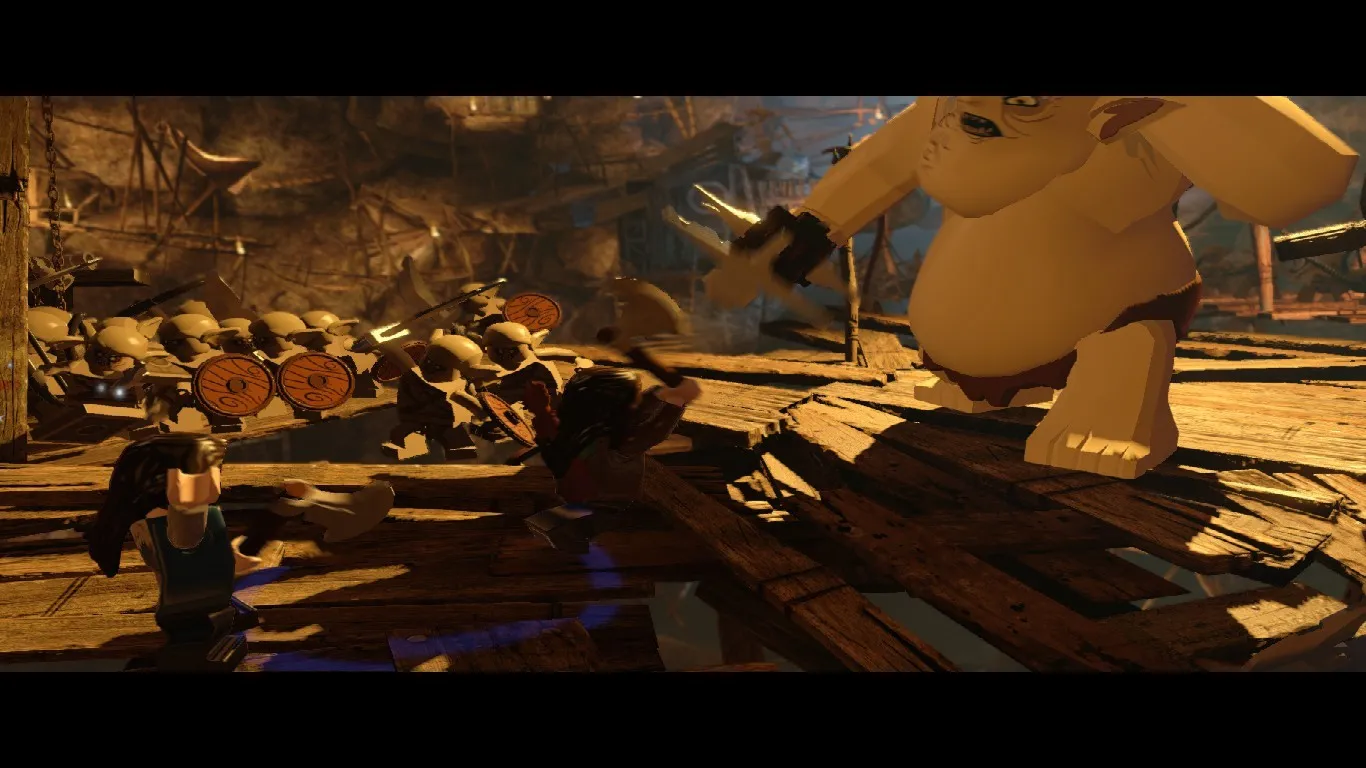
LEGO: The Hobbit Review: A Charming Adventure with Minor Flaws
Contents
LEGO games have a reputation for delivering lighthearted fun, and LEGO: The Hobbit largely continues this tradition. Based on the first two films of Peter Jackson’s The Hobbit trilogy, An Unexpected Journey and The Desolation of Smaug, this game offers a colorful, humorous take on Bilbo Baggins’ epic quest alongside Gandalf and thirteen dwarves to reclaim the lost kingdom of Erebor. This review delves into the game’s strengths and weaknesses, highlighting its enjoyable gameplay, charming world, and areas where it falls short.
A Lighthearted Journey Through Middle-earth
 LEGO: The HobbitLEGO: The Hobbit retains the core gameplay mechanics that have made the LEGO series so popular. The platforming is simple yet satisfying, allowing players to explore, build, and destroy LEGO environments while collecting a wealth of treasures. The game provides a healthy dose of replayability, encouraging players to revisit levels in “Free-play” mode to uncover hidden secrets and achieve 100% completion. Each character possesses unique abilities, requiring players to strategically switch between them to overcome obstacles. Bilbo uses his fishing rod to retrieve items, Bombur’s ample belly serves as a trampoline, Ori’s slingshot targets distant objects, and Gandalf wields his magical staff to dispel darkness.
LEGO: The HobbitLEGO: The Hobbit retains the core gameplay mechanics that have made the LEGO series so popular. The platforming is simple yet satisfying, allowing players to explore, build, and destroy LEGO environments while collecting a wealth of treasures. The game provides a healthy dose of replayability, encouraging players to revisit levels in “Free-play” mode to uncover hidden secrets and achieve 100% completion. Each character possesses unique abilities, requiring players to strategically switch between them to overcome obstacles. Bilbo uses his fishing rod to retrieve items, Bombur’s ample belly serves as a trampoline, Ori’s slingshot targets distant objects, and Gandalf wields his magical staff to dispel darkness.
 LEGO: The HobbitThe game cleverly incorporates elements of crafting, requiring players to gather resources through mining, scavenging, and other activities. This adds another layer of engagement to the gameplay, making exploration even more rewarding. Beyond the main story, numerous side quests and mini-games offer delightful distractions. Players can assist the hobbits of Hobbiton, search for lost items, or engage in rhythmic button-pressing challenges.
LEGO: The HobbitThe game cleverly incorporates elements of crafting, requiring players to gather resources through mining, scavenging, and other activities. This adds another layer of engagement to the gameplay, making exploration even more rewarding. Beyond the main story, numerous side quests and mini-games offer delightful distractions. Players can assist the hobbits of Hobbiton, search for lost items, or engage in rhythmic button-pressing challenges.
Thrilling Action and Immersive Environments
 LEGO: The HobbitThe action sequences are generally entertaining, showcasing thrilling escapes from fire-breathing dragons, daring climbs across giant stone trolls, and satisfying archery segments. Quick-time events (QTEs) and slow-motion combat sequences add an extra layer of excitement, making the gameplay feel cinematic. TT Games consistently excels in level design, and LEGO: The Hobbit is no exception. The picturesque Hobbiton, with its peaceful and idyllic atmosphere, contrasts beautifully with the dark and foreboding goblin dungeons. The soundtrack effectively complements the on-screen action, enhancing the overall immersion and emotional impact.
LEGO: The HobbitThe action sequences are generally entertaining, showcasing thrilling escapes from fire-breathing dragons, daring climbs across giant stone trolls, and satisfying archery segments. Quick-time events (QTEs) and slow-motion combat sequences add an extra layer of excitement, making the gameplay feel cinematic. TT Games consistently excels in level design, and LEGO: The Hobbit is no exception. The picturesque Hobbiton, with its peaceful and idyllic atmosphere, contrasts beautifully with the dark and foreboding goblin dungeons. The soundtrack effectively complements the on-screen action, enhancing the overall immersion and emotional impact.
 LEGO: The HobbitHowever, the combat system suffers from some shortcomings. The character attacks can feel slow and clunky, leaving players vulnerable to enemy strikes. While some characters boast unique abilities, others lack distinction, making character switching feel redundant at times. The similar designs of the thirteen dwarves can also make it difficult to distinguish between them and their respective skills.
LEGO: The HobbitHowever, the combat system suffers from some shortcomings. The character attacks can feel slow and clunky, leaving players vulnerable to enemy strikes. While some characters boast unique abilities, others lack distinction, making character switching feel redundant at times. The similar designs of the thirteen dwarves can also make it difficult to distinguish between them and their respective skills.
Visual Confusion and Repetitive Combat
 LEGO: The HobbitThe vibrant visuals, while generally appealing, can sometimes be overwhelming, making it challenging to track the player character amidst the chaos. The busy environments and similar character designs can lead to moments of confusion, particularly during crowded combat encounters. The repetitive nature of some combat scenarios can also detract from the overall experience.
LEGO: The HobbitThe vibrant visuals, while generally appealing, can sometimes be overwhelming, making it challenging to track the player character amidst the chaos. The busy environments and similar character designs can lead to moments of confusion, particularly during crowded combat encounters. The repetitive nature of some combat scenarios can also detract from the overall experience.
 LEGO: The Hobbit
LEGO: The Hobbit
Conclusion
LEGO: The Hobbit provides a fun and engaging experience for fans of the LEGO games and The Hobbit films. Its charming world, lighthearted humor, and diverse gameplay mechanics make for an enjoyable adventure. However, the clunky combat, repetitive gameplay elements, and occasional visual confusion prevent it from reaching its full potential. Despite its flaws, LEGO: The Hobbit offers a pleasant journey through Middle-earth, suitable for players of all ages seeking a lighthearted and accessible gaming experience.





Comments (0)